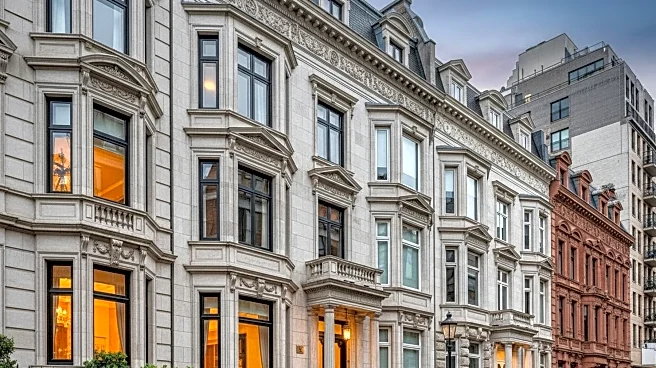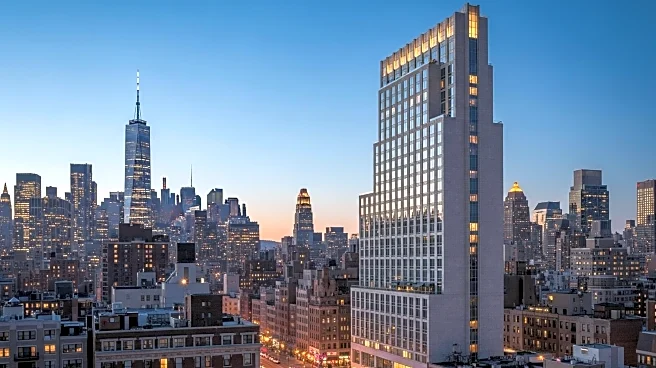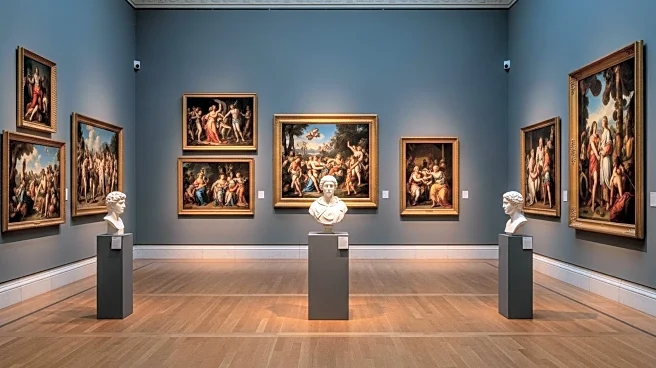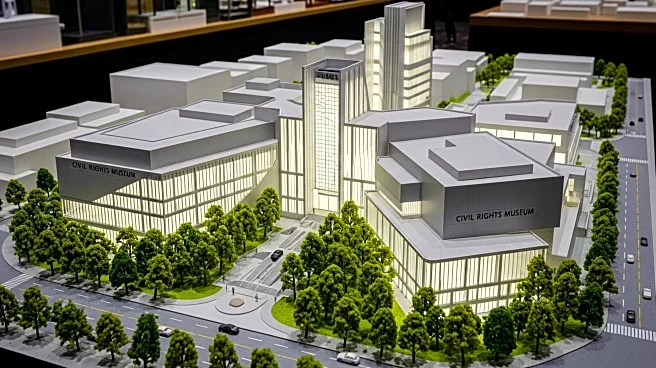What's Happening?
The Chelsea townhouse of the late art gallerist Barbara Gladstone has been sold for $13.1 million, surpassing its initial asking price of $11.99 million. The historic property, located at 344 W. 22nd St, was purchased by an unnamed buyer in an all-cash transaction that closed on August 27. The sale price set a record per square foot for a Chelsea townhouse, according to brokers Scott Hustis and Mark Jovanovic of Compass. The townhouse, built in 1841, was acquired by Gladstone in 2011 for $6.3 million and features design elements by architect Annabell Selldorf and garden design by Piet Oudolf. Gladstone, who passed away last June at the age of 89, was a prominent figure in the art world, having opened her gallery in New York in 1980. Her gallery, Gladstone Gallery, has locations in New York, Brussels, Seoul, and Rome, representing renowned artists such as Matthew Barney and Keith Haring.
Why It's Important?
The sale of Barbara Gladstone's townhouse highlights the continued demand for luxury real estate in New York City, particularly in historic neighborhoods like Chelsea. The record-setting price per square foot underscores the value placed on properties with unique architectural and historical significance. This transaction also reflects the enduring legacy of Gladstone in the art world, as her gallery continues to influence contemporary art across multiple international locations. The sale of her private art collection earlier this year, which included works by Andy Warhol and Richard Prince, further emphasizes her impact on the art market. The successful sale of the townhouse and her art collection may inspire other collectors and investors to explore similar opportunities in the high-end real estate and art markets.
What's Next?
Following the sale of the Chelsea townhouse, attention may turn to another property owned by Gladstone—a Gilded Age mansion in North Fork, currently listed for $12 million. The outcome of this sale could further illustrate trends in the luxury real estate market, particularly for properties with historical and artistic significance. Additionally, the Gladstone Gallery may continue to expand its influence in the art world, potentially opening new locations or hosting significant exhibitions. The art market may also see increased interest in works from Gladstone's collection, as collectors seek pieces with provenance linked to her esteemed gallery.
Beyond the Headlines
The sale of Gladstone's townhouse not only marks a significant real estate transaction but also highlights the intersection of art and real estate. Properties owned by influential figures in the art world often carry additional cultural and historical value, attracting buyers who appreciate both the architectural and artistic significance. This trend may lead to increased collaboration between real estate developers and art institutions, creating spaces that serve both residential and cultural purposes. Furthermore, the preservation of such properties ensures that the legacy of influential figures like Gladstone continues to inspire future generations.













